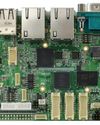Intentar ORO - Gratis
Adopting Test-Driven Development in Embedded Systems
Circuit Cellar
|April 2025
Embedded software development has long been characterized by unique constraints such as limited resources, strict real-time requirements, and complex interactions with hardware. As a result, traditional software development methodologies often fail to translate smoothly into the embedded space. However, modern embedded development is evolving, and techniques like Test-Driven Development (TDD) are no longer just for web and enterprise applications: they're essential for building reliable and maintainable embedded systems.

In my previous article, I introduced a modern CMake build system [1] designed to support flexible embedded development, including DevOps, simulation, and automated testing. Now, it's time to focus on one of the most powerful software engineering practices that this system enables: Test-Driven Development.
WHAT IS TEST-DRIVEN DEVELOPMENT (TDD)?
A big problem with software development is that developers write a lot of code quickly and then wait until the end to test it. Humans aren't perfect, and the chances are high that they won't catch every edge case and boundary condition. Making things worse is the fact that the testing is often done manually, so as the project grows in size, the time required to run those manual tests grows until there isn't enough time to test everything. The result is a system with bugs hiding and waiting to rear their ugly heads to users.
TDD is a development methodology that emphasizes writing tests before writing the actual implementation. Instead of blindly coding and hoping everything works at runtime, developers don't write a single line of production code unless a test is written to prove it does what it's supposed to do. There are many advantages to this approach. No code is written unless it's actually needed. All code has a test to prove that it works. Tests can be automated, which removes manual testing time
TDD enforces a disciplined approach to writing software. Developers use a simple process, which Kent Beck developed in his book Test-Driven Development. For embedded developers, though, the best interpretation of this list is the one that James Grenning put together in his book Test-Driven Development for Embedded C, called the TDD microcycle, which includes the following steps:
1) Add a small test
2) Run all the tests and see the new one fail, maybe not even compile
3) Make the small changes needed to pass the test
Esta historia es de la edición April 2025 de Circuit Cellar.
Suscríbete a Magzter GOLD para acceder a miles de historias premium seleccionadas y a más de 9000 revistas y periódicos.
¿Ya eres suscriptor? Iniciar sesión
MÁS HISTORIAS DE Circuit Cellar

Circuit Cellar
The Future of Sensors in Safety Systems Sensing the Stop
How Magnetic Sensors Are Enabling the Next Generation of Braking Systems
5 mins
December 2025
Circuit Cellar
Alif Semiconductor Elevates Generative AI at the Edge with New Support for ExecuTorch Runtime in Its Ensemble MCUs
Alif Semiconductor, the leading global supplier of secure, connected, power efficient Artificial Intelligence and Machine Learning (AI/ML) microcontrollers (MCUs) and fusion processors, announced that developers can now use the ExecuTorch Runtime, a quantization extension of the popular PyTorch ML framework, for AI applications built to run on its Ensemble E4/E6/E8 series of MCUs and fusion processors.
1 min
December 2025

Circuit Cellar
Encrypted MQTT Protocol for Critical Sectors
Mechanisms, Challenges, and Best Practices
3 mins
December 2025

Circuit Cellar
Datasheet: Small Size, Big Power
Smaller Microcontrollers Bring New Possibilities
9 mins
December 2025

Circuit Cellar
Analog Devices Launches ADI Power Studio and New Web-Based Tools
Analog Devices, Inc. (ADI), a global semiconductor leader, announced the launch of ADI Power Studio, a comprehensive family of products that offers advanced modeling, component recommendations, and efficiency analysis with simulation.
1 mins
December 2025

Circuit Cellar
Compact IBR300 2.5" SBC Powered by NXP i.MX 93 from IBASE
IBASE Technology, Inc., a leading provider of rugged embedded computing platforms, announced the release of the IBR300, a 2.5\" RISC-based single board computer (SBC) powered by the NXP i.MX 93 processor with dualcore ARM Cortex-A55 (up to 1.7GHz) and a Cortex-M33 MCU.
1 min
December 2025

Circuit Cellar
Sensors in the Spotlight
The Next Decade of Embedded Sensor Systems
12 mins
December 2025

Circuit Cellar
Bob's Wrap Up
In Bob's last article with Circuit Cellar, he attempts to wrap up a career of more than 50 years as an embedded systems engineer and 14 years with Circuit Cellar. He looks at each of his 58 articles by category and provides some recommendations for his fellow engineers.
7 mins
December 2025

Circuit Cellar
Designing Embedded Software Architectures That Last
I've reviewed hundreds of firmware projects over the years, and one thing always stands out: the most successful projects have a clear, deliberate architecture.
10 mins
December 2025
Circuit Cellar
Broadcom Introduces Industry's First Wi-Fi 8 Silicon Ecosystem Powering the AI Era
Broadcom, Inc. unveiled the first Wi-Fi 8 silicon solutions for broadband wireless, targeting residential gateways, enterprise access points, and smart mobile clients.
1 mins
December 2025
Listen
Translate
Change font size
